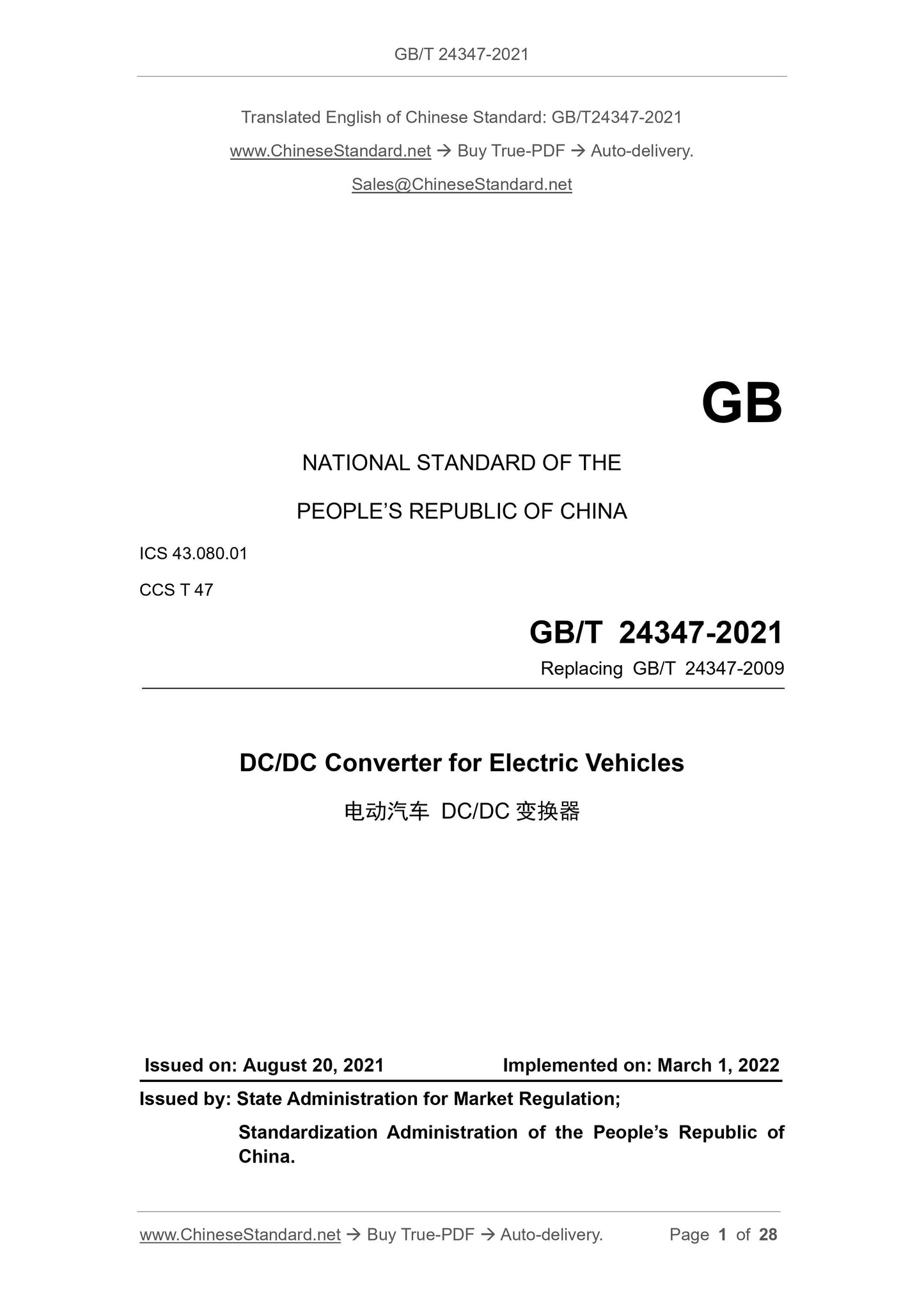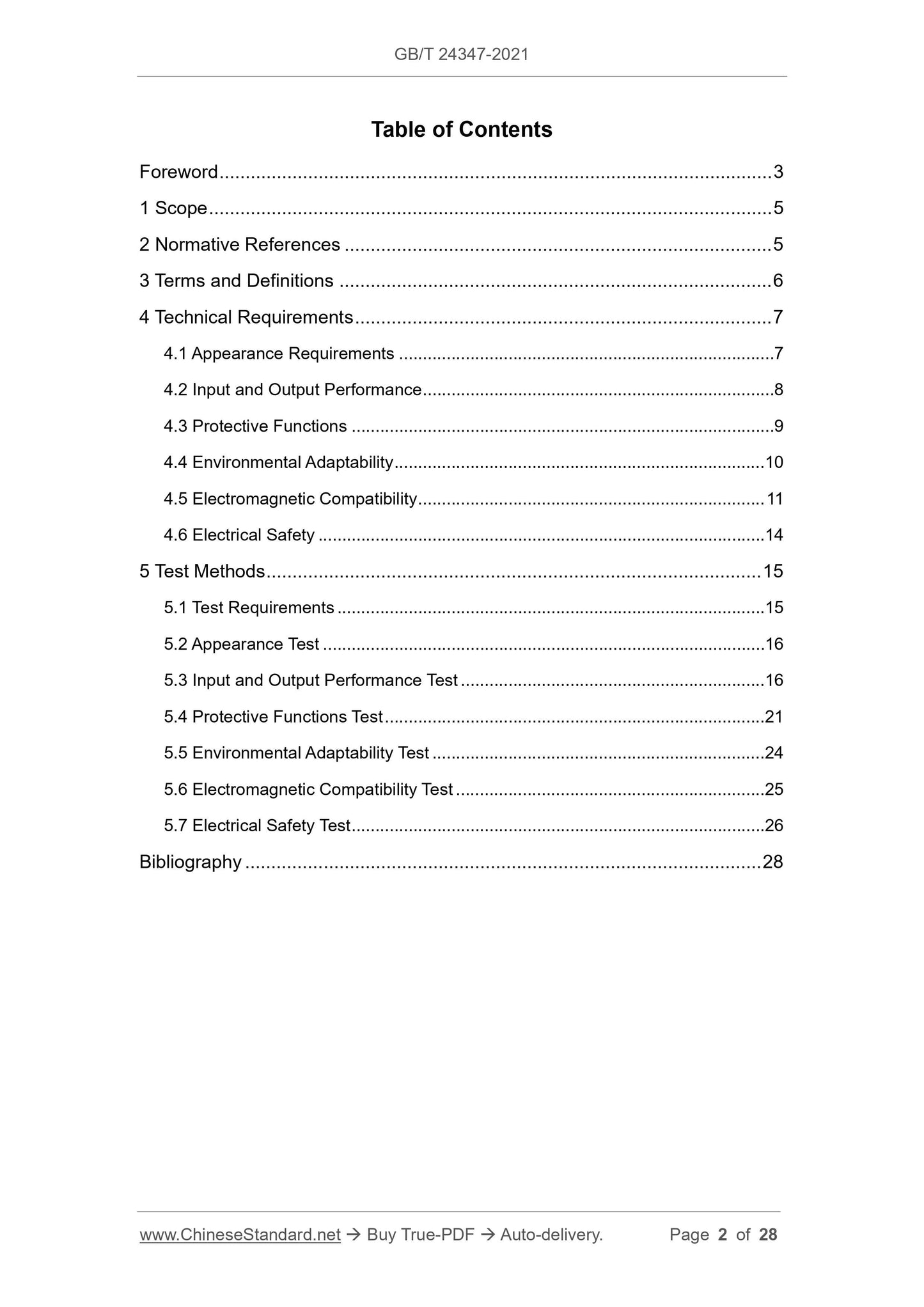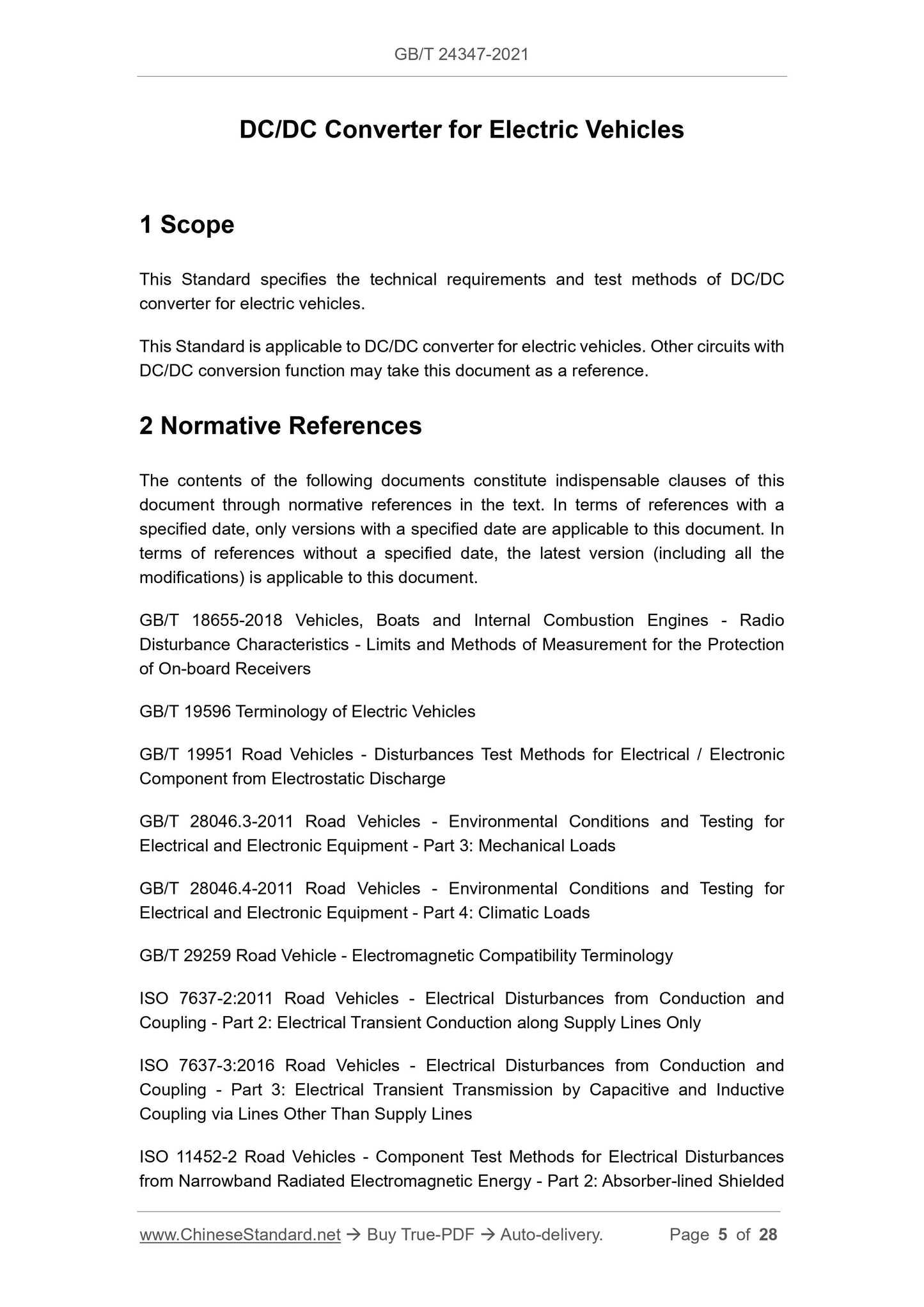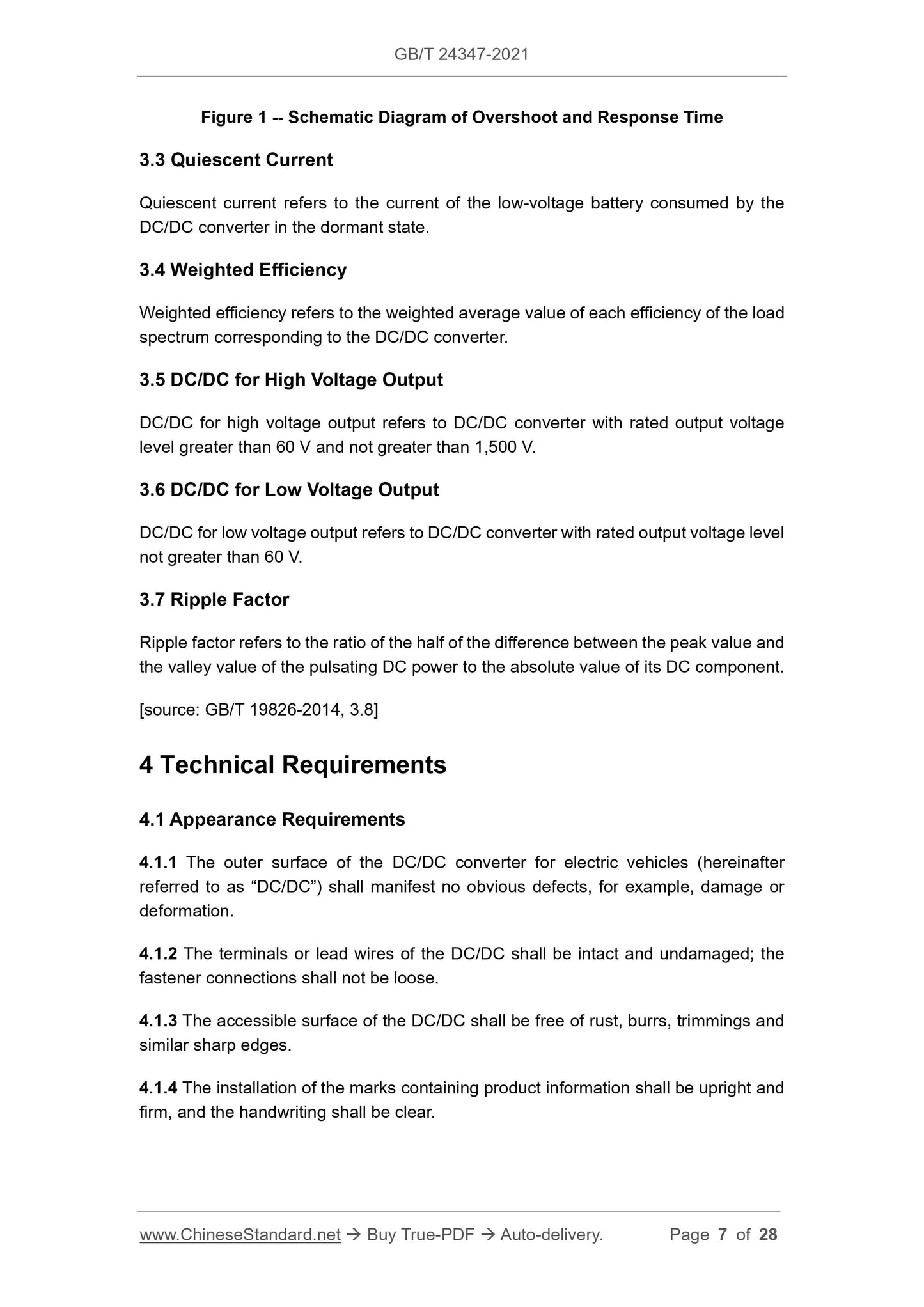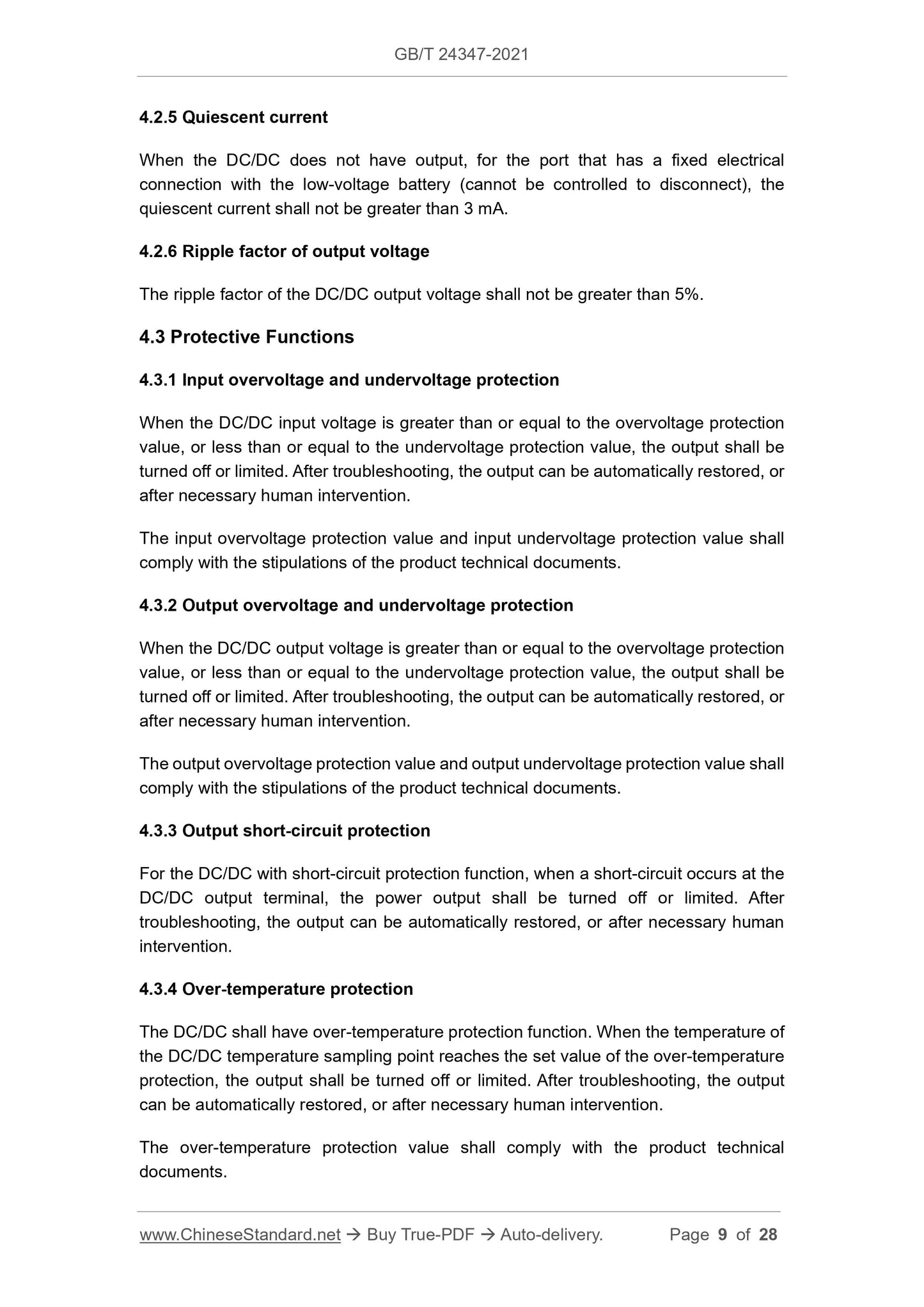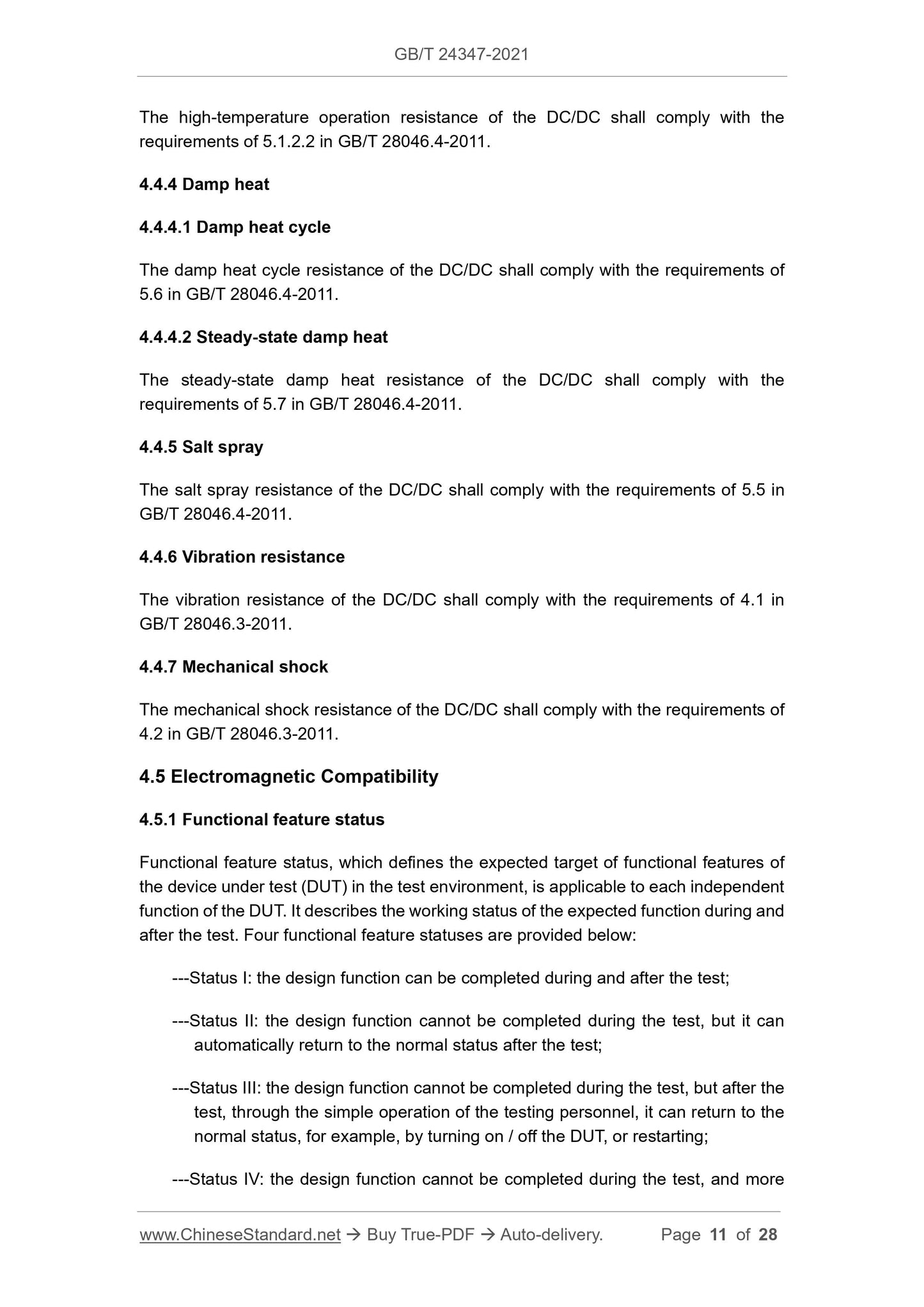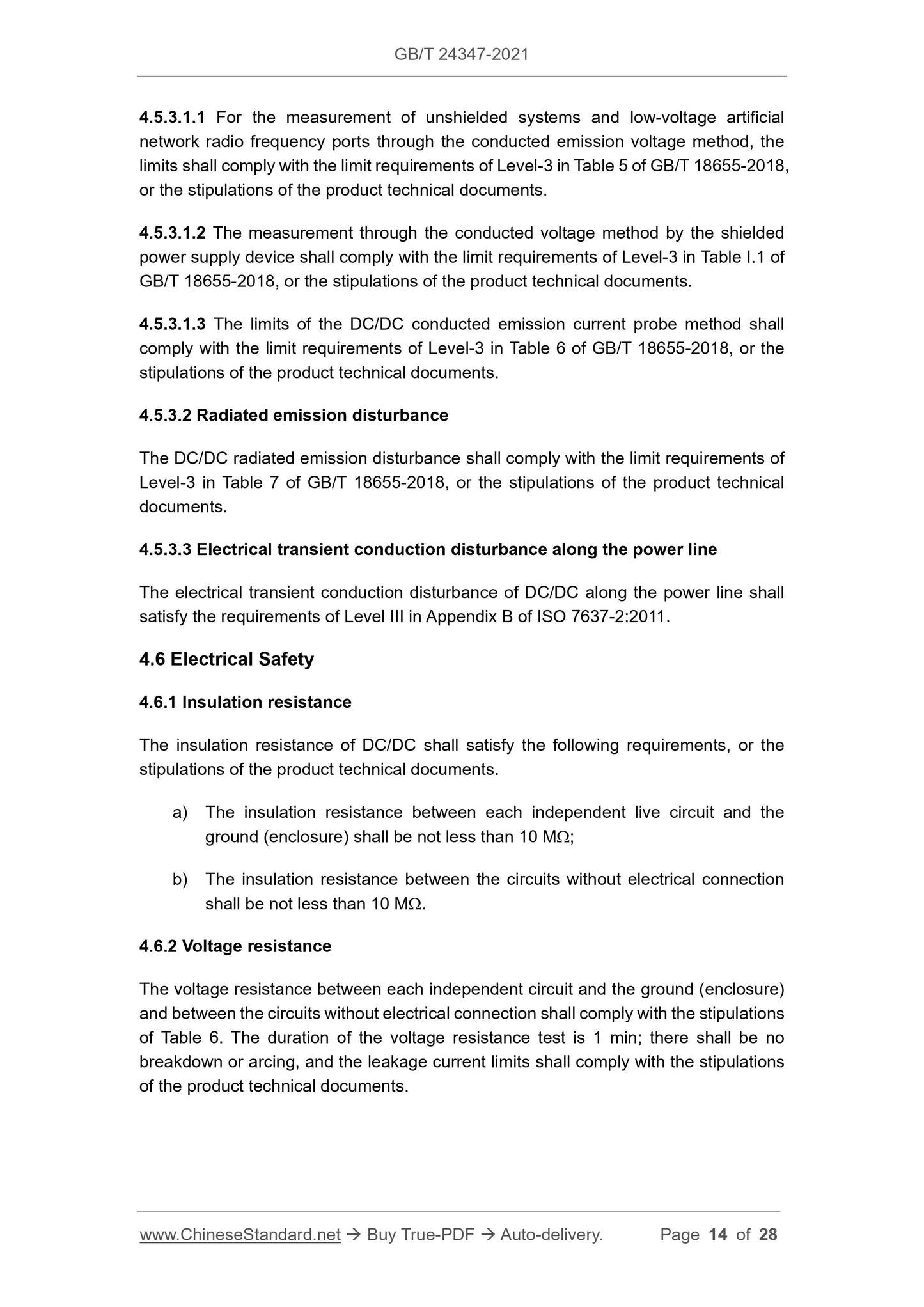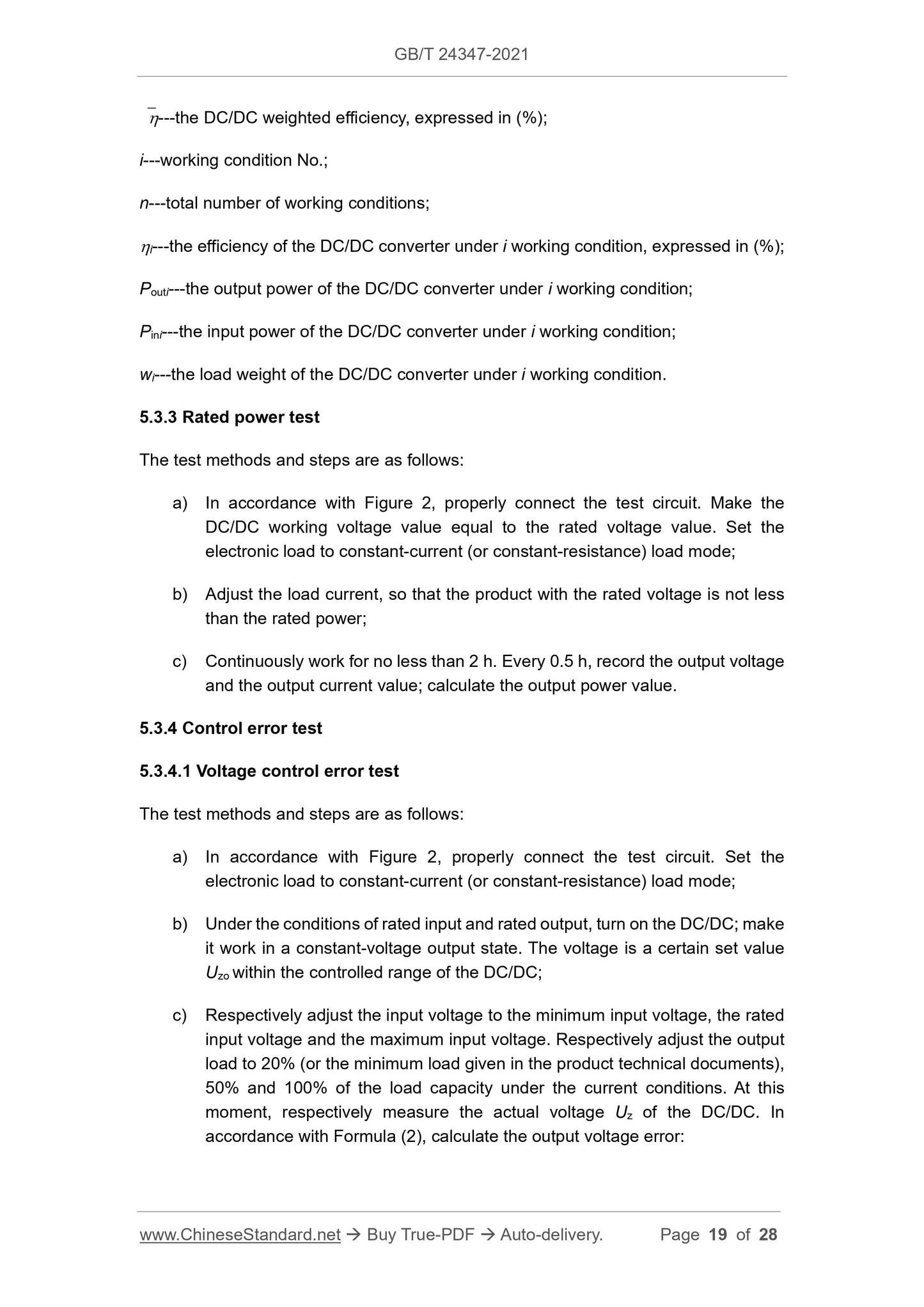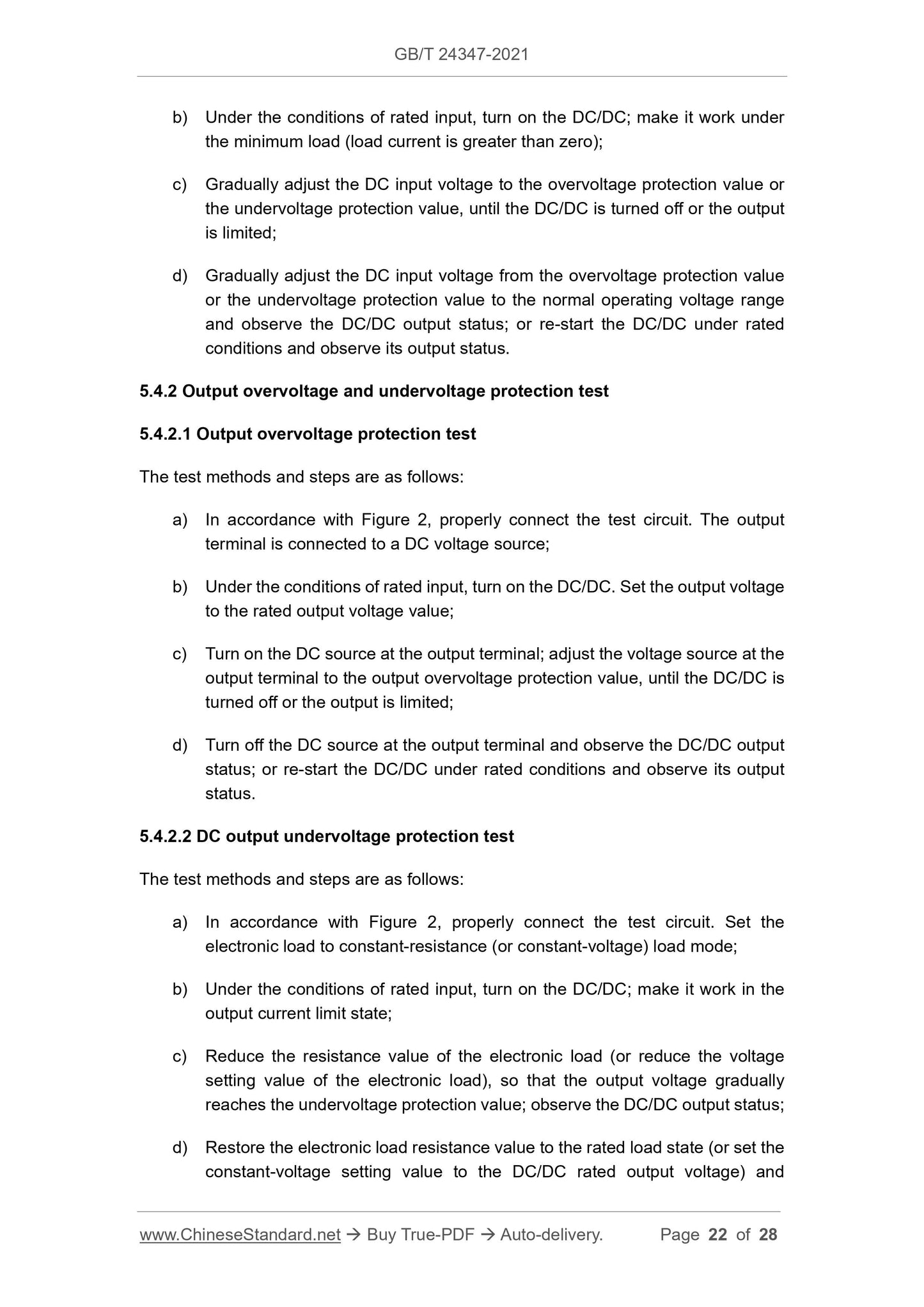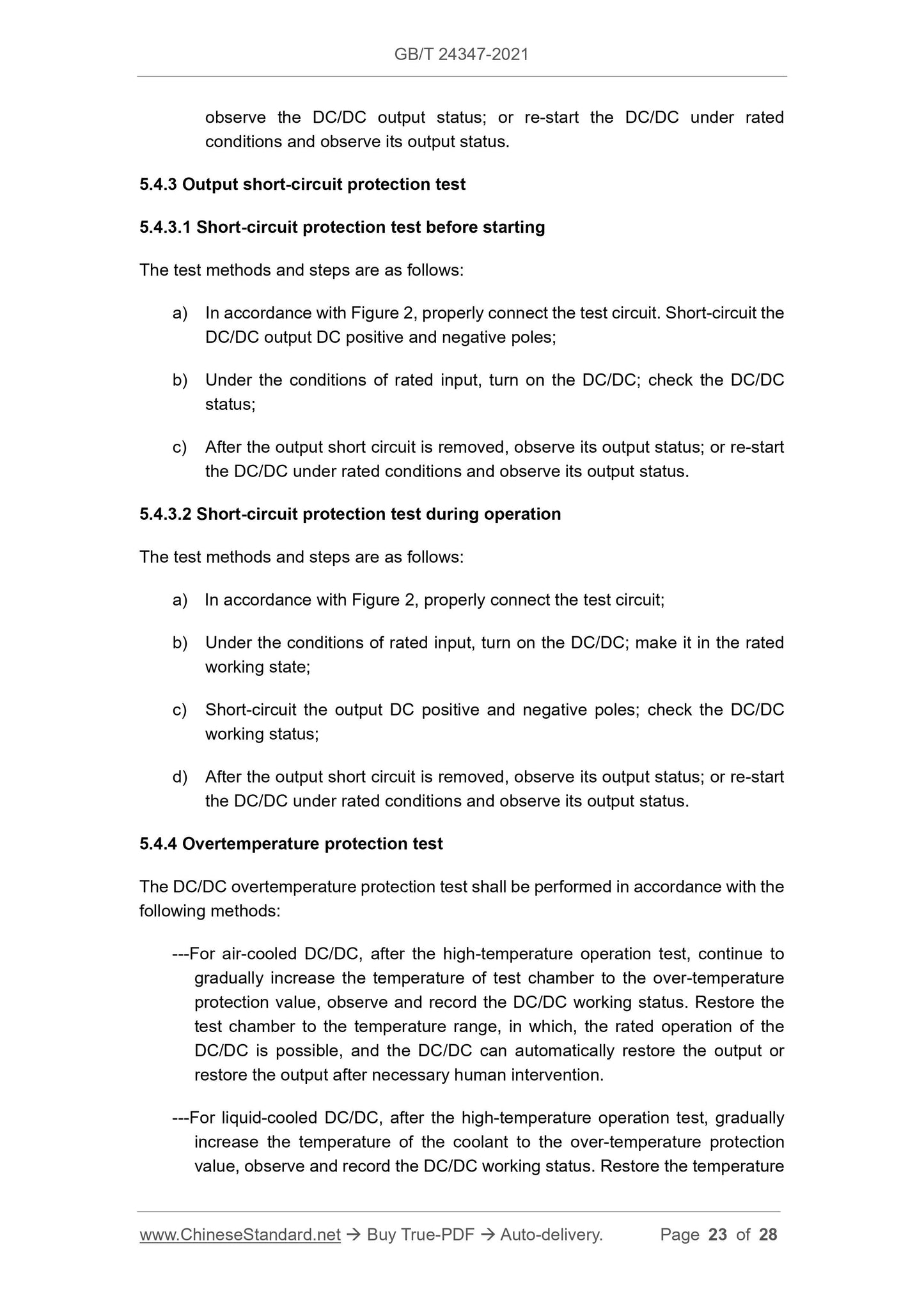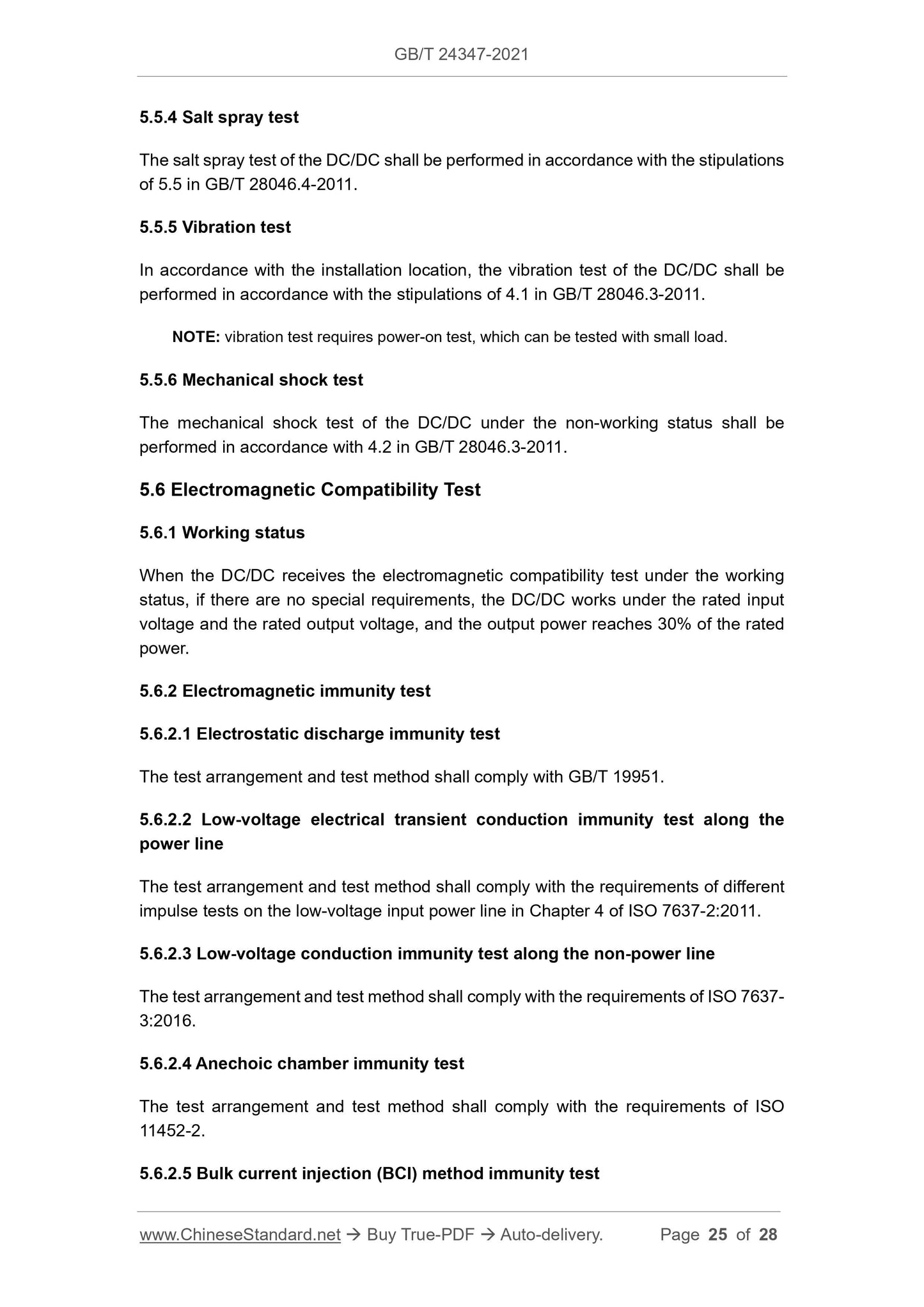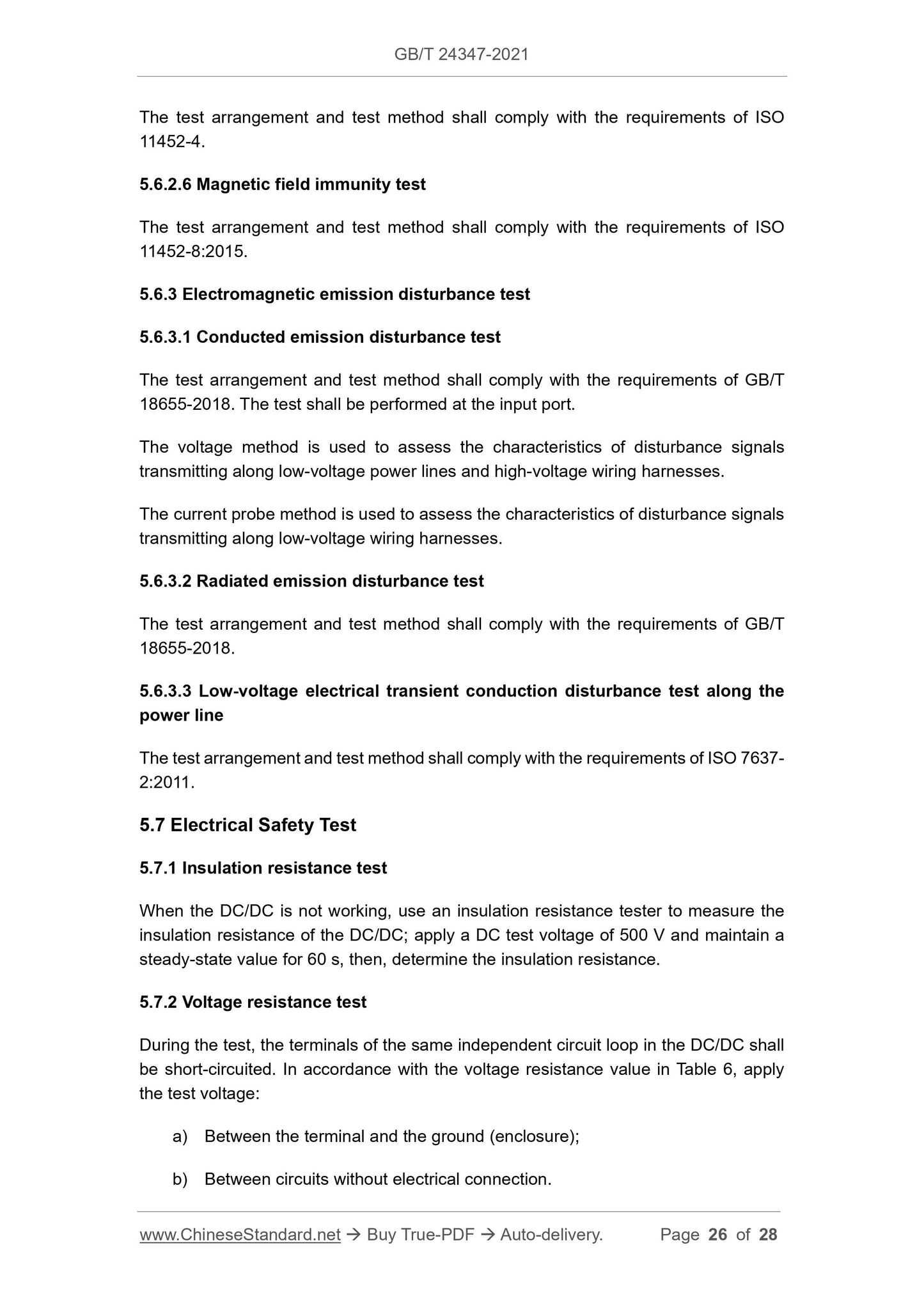1
/
of
12
www.ChineseStandard.us -- Field Test Asia Pte. Ltd.
GB/T 24347-2021 English PDF (GB/T24347-2021)
GB/T 24347-2021 English PDF (GB/T24347-2021)
Regular price
$305.00
Regular price
Sale price
$305.00
Unit price
/
per
Shipping calculated at checkout.
Couldn't load pickup availability
GB/T 24347-2021: DC/DC converter for electric vehicles
Delivery: 9 seconds. Download (and Email) true-PDF + Invoice.Get Quotation: Click GB/T 24347-2021 (Self-service in 1-minute)
Newer / historical versions: GB/T 24347-2021
Preview True-PDF
Scope
This Standard specifies the technical requirements and test methods of DC/DCconverter for electric vehicles.
This Standard is applicable to DC/DC converter for electric vehicles. Other circuits with
DC/DC conversion function may take this document as a reference.
Basic Data
| Standard ID | GB/T 24347-2021 (GB/T24347-2021) |
| Description (Translated English) | DC/DC converter for electric vehicles |
| Sector / Industry | National Standard (Recommended) |
| Classification of Chinese Standard | T47 |
| Word Count Estimation | 22,227 |
| Issuing agency(ies) | State Administration for Market Regulation, China National Standardization Administration |
Share
